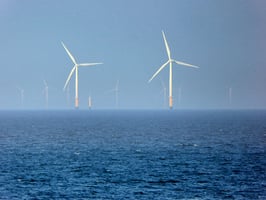In the energy sector, compliance with Independent System Operators' (ISOs) regulations is a...
Connecting PacifiCorp and CAISO: A Cleaner and More Efficient Western Grid
The Western United States is a pioneering region in the shift towards clean and renewable energy sources. It boasts vast solar, wind, and hydropower potential, positioning it as a critical player in the global transition to sustainable energy. The Federal Energy Regulatory Commission (FERC) recently approved the California Independent System Operator's (CAISO) proposal for a Western day-ahead market, a pivotal moment in Western power markets. This approval includes the connection of PacifiCorp and CAISO, the two largest grid operators in the Western region.
The Transition to Clean Energy in the West
The Western United States has long been a leader in renewable energy generation. California, Nevada, Arizona, and Oregon have invested substantially in solar and wind power, harnessing the region's abundant natural resources. According to the U.S. Energy Information Administration (EIA), in 2021, California alone generated over 38% of its electricity from renewable sources, demonstrating the region's commitment to clean energy.
Several factors drive this transition. Firstly, the West is rich in renewable resources, with sun-soaked deserts, powerful winds, and untapped hydropower in the Pacific Northwest. According to the EIA, the Western region accounted for 60% of total U.S. hydropower capacity in 2021.
Environmental concerns are also a driving force. With climate change posing significant threats, Western states are acutely aware of the need to reduce carbon emissions. The EIA reports that in 2020, California's carbon emissions from electricity generation were 35% lower than in 2000, reflecting their commitment to environmental sustainability.
Economic feasibility is another crucial factor. Technological advancements and economies of scale have significantly lowered the cost of renewable energy production. The EIA notes that the levelized cost of electricity for utility-scale solar photovoltaic (PV) and onshore wind projects in the West has decreased significantly over the past decade, making clean energy more economically attractive.
Moreover, policy initiatives have played a pivotal role. State-level programs like renewable portfolio standards and tax incentives have incentivized investment in clean energy projects. The Database of State Incentives for Renewables & Efficiency (DSIRE) highlights California's renewable portfolio standard, which mandates that 60% of retail electricity sales will come from renewable sources by 2030.
The Connection Between PacifiCorp and CAISO
FERC's approval of CAISO's day-ahead market proposal brings a transformative connection between PacifiCorp and CAISO into focus. PacifiCorp, serving over 1.9 million customers across six Western states, and CAISO, managing the high-voltage power grid for most of California and parts of Nevada, join forces to advance a more efficient and sustainable energy future.
This connection offers several key advantages backed by real-life data:
- Increased Renewable Energy Capacity: The interconnection allows for sharing renewable energy resources across a wider geographical area. According to the EIA, the Western region accounted for 37% of total U.S. wind capacity in 2020, and this interconnection enables surplus wind and solar energy to be effectively utilized, reducing carbon emissions.
- Enhanced Grid Reliability: In the event of localized outages or supply fluctuations, the interconnected grid facilitates efficient power redistribution, maintaining a stable energy supply. The Western Electricity Coordinating Council (WECC) reports that the interconnected grid improves grid reliability by reducing the impact of equipment failures and weather-related disruptions.
- Reduced Curtailment: Curtailment of renewable energy, a common issue, occurs when excess power cannot reach areas of high demand. The interconnected grid minimizes curtailment, ensuring that clean energy is fully utilized. According to the California Energy Commission, in 2020, California reduced solar curtailment by 50% compared to 2018 through grid enhancements.
- Improved Resource Planning: Grid operators can better anticipate and integrate new renewable energy projects, optimizing their location and capacity. The WECC emphasizes that resource planning on an interconnected grid leads to a more sustainable and resilient energy system.
Economically, increased clean energy utilization stimulates job creation, reduces energy costs, and improves air quality. According to the U.S. Bureau of Labor Statistics, the clean energy sector employed over 3.4 million workers in 2020. Reduced reliance on fossil fuels decreases energy costs for consumers. The American Lung Association notes that transitioning to cleaner energy sources reduces healthcare costs associated with air pollution-related illnesses.
However, challenges include the need for substantial infrastructure investment, navigating complex regulations, and monitoring market dynamics. Environmental considerations are also critical, balancing the benefits of clean energy with potential ecological impacts. Effective governance and coordination between PacifiCorp and CAISO are paramount for success.
In conclusion, the connection between PacifiCorp and CAISO unlocks substantial clean energy potential, enhancing capacity, reliability, and economic benefits. Addressing challenges while prioritizing sustainability and governance will ensure a cleaner and more efficient Western grid.


